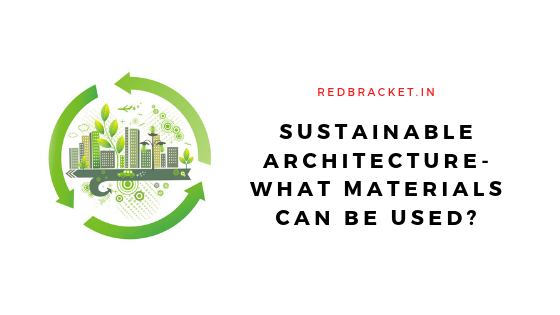
There’s no question about how concrete plays the role of the primary component in when it comes to building houses, buildings, bridges, and so on. But, there’s also not much debate when it comes to ascertaining that concrete isn’t really the most sustainable building material out there.
What then can be used in stead of concrete – a material that is both sturdy, as well as sustainable?
We have here 6 sustainable architecture materials that could provide us a greener alternative for both commercial as well as residential projects:
Bamboo
Bamboo is being seen as a trendy construction material since quite some time now. All the utensils and furniture and what not being made out of bamboo these days only increases its position on the popularity chart.
It isn’t hard to see how it has become a hot favourite amongst interior designers and other people with a creative bend of mind, who also support sustainable practices. But, all the madness around bamboo has made us forget that it’s not new to the world of construction; it has been used in construction since thousands of years.
It has always been known for possessing a unique combination of tensile strength, less weight, as well as renewability. It’s this combination that makes it the perfect cost-effective replacement for many imported materials.
It also the reason why it serves as a fantastic alternative to concrete construction, especially in places where bamboo is sourced locally – where people have an easy access to the material.
Wood
Wood has been tried and tested more than once and it has proved itself to be a true construction mainstay, time and again. It retains some glaring advantages over steel, concrete, and a lot of other industrial building materials.
It’s 5th grade science – trees take in carbon dioxide as they grow. They do not need to undergo any energy-intensive procedure so as to be converted into being a construction product.
When you manage a forest in a proper way, it is also renewable, which results in a biodiverse habitat.
Straw Bales
There was a time when our homes were built form materials that were natural and sourced locally. Instead of being mostly reliant on technology, like we are today, straw bales buildings are all about using what the nature provides.
Replacing gypsum, plaster, concrete, along with a range of other materials used in building walls by straw bales sure is a nod to environment-friendly practices. Plus, they are good at what they do.
They show a high insulating capability if sealed properly. Not just utilitarian and sustainable, this renewable source happens to be affordable too.
Recycled Plastic
Since a few years, plastic has been emerging as a more sustainable option when it comes to building eco-friendly houses. Researchers are trying to find more and more ways to use recycled plastics and ground-up trash to produce concrete.
It is being seen as a better way of making concrete, rather than sourcing, then mining, and finally milling new components.
The reason is simple. It’s a great practice which helps reducing greenhouse gas emissions.
Plastic as a part of our daily trash isn’t doing the world any good, other than clogging landfills. Science has already been looking for creative ways to use plastic in a way that could make it contribute positively to our environment.
Using recycled plastic to undercut the damages brought by concrete is a step in that direction.
Timbercrete
Timbercrete is an intriguing material that can be used in the building of sustainable architecture. While it is composed of sawdust and concrete, this material happens to be lighter than concrete.
Timbercrete replaces some of the ingredients in your traditional concrete that tend to be more energy-involved. Timbercrete is known for reducing transportation emissions.
This material can be shaped into blocks, bricks, and pavers, that makes it not just sustainable, but versatile as well.
Rammed Earth
There’s another natural technology which the human civilization has been using since thousands of years. It’s what we call rammed earth. There are amazing advantages to this material.
One, it can last a long, long time. Two, when it is pressed tightly in its wooden form, it can create walls which are similar in feel to concrete.
The rammed earth buildings that we see being produced today can be made even safer if fortified by rebar or bamboo.
Final Word…
A lot of environmental pollution and the consequent climate change has been a direct result of commercial concrete production. It’s a process that releases tons of greenhouse gases into the atmosphere, therefore contributing to massive environmental concerns on a global scale.
It’s great news then, that we have with us construction materials that are more sustainable – materials that present to us a green architecture.